Evolutionary Ecology
The department of Evolutionary Ecology gathers complementary skills in behavioural ecology, population dynamics, population biology, community ecology, and methodology (statistics and modelling). The research done in the department aims at studying how animal species evolve in a changing world by understanding the causes of the evolution of traits, adaptations and interactions. For that, we consider different levels of organization from individuals to populations and communities. Because organisms cannot be considered isolated from other biotic factors, we consider pathogens but also competing species within communities.
We study how individuals adapt to their environments that are largely impacted by anthropic pressures, and how life history traits and behaviour evolve in response to these pressures. Although we mainly focus on phenotype, we more and more consider the mechanistic link between the genotype and the phenotype. We develop the theoretical framework of our discipline through a conceptual and modeling approach. In parallel, we test hypotheses that arise from theoretical predictions through experimental, comparative and observational approaches on different biological models (insects, birds, mammals). Experimental approaches are developed in the laboratory (insect model) and in natura (bird, insect and mammal models). Observational and comparative research is mainly concerned with vertebrates. Our approaches are also, and increasingly, interested in the mechanisms of adaptive responses. In addition to the classical approaches of demographic analysis and trait change, methods of ecophysiology, chemical ecology and molecular biology are used.
Our department hosts several long-term studies of wild populations of different species. These long-term studies offer a valuable way to understand how biotic and abiotic factors affect individuals’ life history traits, and the functioning of populations in natura. Five populations of mammalian species are thus monitored for several years (more than 40 years on roe deer, 30 on Alpine marmots, 25 years on cats, 16 years on zebras, and 20 years on impala). Two of our study sites (La Sassière in Vanoise National Park (Alpine marmots) and Hwange National Park) have been certified as “Site d’Etude en Ecologie Globale” (SEEG), and two (ZA “Hwange” and ZA “Antarctic and sub-Antarctic”) were certified as “Zone Atelier” by the CNRS.
The department of Evolutionary ecology is also largely involved in training activities. Lastly, we also have strong socio-economic relationships. Indeed, because we address questions of major societal interest (global warming, public health) we tightly collaborate with socio-economic partners (Office Français de la Biodiversité, Vanoise National Park, Hwange National Park in Zimbabwe, Office National des Forêts, etc.) and participate to general public and media events.
Publications
Display of 91 to 120 publications on 2483 in total
The Eternal Youth of Ageing Research
The Biodemography of Ageing and Longevity . ( 1 ) : 1-11
Book chapter
see the publicationContribution of variable TE content on phenotype and plasticity in Drosophila melanogaster.
Annual meeting of the Society of Molecular Biology and Evolution (SMBE) .
Conference paper
see the publicationContribution of variable TE content on phenotype and plasticity in Drosophila melanogaster.
Conférence Jacques Monod Life is plastic .
Conference paper
see the publication3D models related to the publication: 'Trophic differentiation between the endemic Cypriot mouse and the house mouse: a study coupling stable isotopes and morphometrics
MorphoMuseum . 10 ( 4 ) : e247
Journal article
see the publicationInsular evolution from an archaeological perspective: a case study of Orkney house mouse
Biological Journal of the Linnean Society .
Journal article
see the publicationAssessment of the Risks of Zoonotic Infection at the Primatology Centre of the Interdisciplinary Medical Research Centre of Franceville in Gabon
Journal of Medical Primatology . 53 ( 5 )
DOI: 10.1111/jmp.12741
Journal article
see the publicationAdvancing Maternal Transfer of Organic Pollutants across Reptiles for Conservation and Risk Assessment Purposes
Environmental Science and Technology . 58 ( 40 ) : 17567-17579
Journal article
see the publicationEssential mineral elements in roe deer: Associations with parasites and immune phenotypes in two contrasting populations
Ecology and Evolution . 14
DOI: 10.1002/ece3.11613
Journal article
see the publicationContribution of variable TE content on phenotype and plasticity in Drosophila melanogaster
International congress of transposable elements .
Poster
see the publicationTrait matching without traits: using correspondence analysis to analyze the latent structure of interaction networks
Preprint
see the publicationManipulation of natural transformation by AbaR-type islands promotes fixation of antibiotic resistance in Acinetobacter baumannii
Proceedings of the National Academy of Sciences of the United States of America . 121 ( 39 ) : e2409843121
Journal article
see the publicationZero-shot animal behavior classification with vision-language foundation models
Preprint
see the publicationThe great tit HapMap project: a continental‐scale analysis of genomic variation in a songbird
Molecular Ecology Resources . 24 ( 5 ) : e13969
Journal article
see the publicationIntransitive stability collapses under the influence of dominant competitors
The American Naturalist . 204 ( 1 ) : E1-E10
DOI: 10.1086/730297
Journal article
see the publicationThe concept of critical age group for density dependence: bridging the gap between demographers, evolutionary biologists and behavioral ecologists
Philosophical Transactions of the Royal Society B: Biological Sciences . 379 ( 1916 ) : 20220457
Journal article
see the publicationThe impact of boldness on demographic rates and life‐history outcomes in the wandering albatross
Journal of Animal Ecology .
Journal article
see the publicationTraffic and weather influence on small wildlife carcass persistence time on roads
Transportation Research Part D: Transport and Environment . 126 : 104012
Journal article
see the publicationIntegration of animal movement into wildlife-vehicle collision models
Ecological Modelling . 492 : 110690
Journal article
see the publicationBeing confident in confidence scores: calibration in deep learning models for camera trap image sequences
Remote Sensing in Ecology and Conservation .
DOI: 10.1002/rse2.412
Journal article
see the publicationProjet DS2 : Drosophila suzukii « Développer des Stratégies de gestion efficaces, économiquement viables et durables »
Innovations Agronomiques . 94 : 127-140
Journal article
see the publicationAvis de l’Anses relatif aux « modalités de surveillance et de lutte contre la brucellose des bouquetins dans les massifs du Bargy et des Aravis»
: 36 p.
Report
see the publicationRisk of further EHDV introduction in Europe
17. International Symposium on Veterinary Epidemiology and Economics .
Poster
see the publicationfitdistrplus: Help to Fit of a Parametric Distribution to Non-Censored or Censored Data
Software
see the publicationA local ecological knowledge-based assessment of anthropodependence for large mammals in anthropogenic landscapes
Biological Conservation . 290 : 110450
Journal article
see the publication(Epi)mutation Rates and the Evolution of Composite Trait Architectures
The American Naturalist . 204 ( 3 ) : E42-E56
DOI: 10.1086/731461
Journal article
see the publicationWildlife diseases: a framework to prioritise targeted surveillance
15th European Wildlife Disease Conference .
Conference paper
see the publicationSons Shorten Mother’s Lifespan in Preindustrial Families with a High Level of Infant Mortality
The American Naturalist . 204 : 315 - 326
DOI: 10.1086/731792
Journal article
see the publicationBody mass change over winter is consistently sex-specific across roe deer (Capreolus capreolus) populations
Peer Community In Ecology . 4 : e98
Journal article
see the publicationResponse of a carnivore community to water management in a semi-arid savanna
Biological Conservation . 299 : 110777
Journal article
see the publication
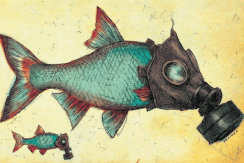
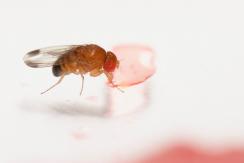
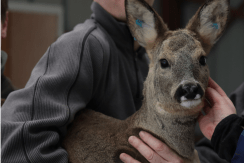
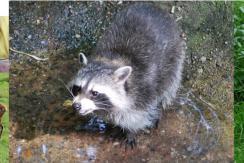
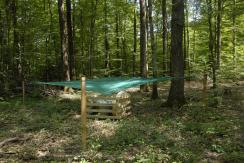
You also, comment on this article